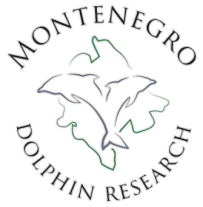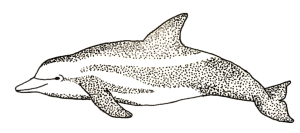With the intention of better understanding the causes of litter pollution and waste in Montenegro’s areas of natural beauty, the Montenegro Dolphin Research team conducted a brand audit of waste collected on a recent clean of Bar’s public beach. Research assistant Elle Sibthorpe writes… As a cetacean research programme the issue of waste and ocean plastic – although not directly related to the Montenegro Dolphin Research project – is an issue of such magnitude that it cannot be ignored. While there are many factors contributing to the decline in numbers of dolphins and whales sighted in the Southern Adriatic, litter is a constant feature of walks, surveys, boat trips and even inland hikes enjoyed by our team. Not only is this damaging to Montenegro’s incredibly beautiful and varied natural environment, but it is directly impacting upon the natural habitat of cetaceans that are already so at risk. Communities, conservationists, NGOs and local businesses alike have a fantastic network here in Montenegro, taking on the responsibility of collecting and dealing with the waste that washes up in their lakes, rivers and oceans – but is it right that such groups should be bearing the brunt of the work? In November our interns facilitated a community beach clean in Bar with the express intention of analysing the waste collected and conducting a brand audit in an attempt to identify which companies are the heaviest polluters in the area. Thanks to fantastic public involvement we were able to collect nine 200L bin liners of waste within a two hour period, which then required a further two hours of separating, counting and analysis from our volunteer team. The survey was conducted over a 300m section of pebble beach, following the protocol of the #breakfreefromplastic global brand audit. The range of items collected was as we expected, based on previous beach cleans, and included significant numbers of personal care products, discarded fishing gear, packaging material and household products. Of the 1755 items collected, however, two categories of waste dominated. An incredible 666 items were classified as Food Packaging and 659 as Smoking Materials, working out at 37.9% and 37.5% respectively. To have more than 75% of the total waste collected derive from two categories is perhaps shocking, but does allow us to clearly identify the major causes of waste and establish targeted actions for its reduction. We quickly identified an issue with fulfilling the initial aim of the survey: the nature of cigarette butts (which accounted for 99.7% of Smoking Materials collected) means that identifying their brand is incredibly difficult, particularly when they have spent time disintegrating in salt water. The fact that they degrade so quickly does not suggest that they are not detrimental to the environment, however. The majority of cigarette butts are made of a plastic called cellulose acetate in the form of thin, fibrous strands packed closely together. While cellulose acetate can be recycled, the majority of facilities are not equipped to do so, and the fact that the littering of cigarette butts is such a widely accepted practice means that few ever reach the recycling centres at all. Directing our attention instead to Food Packaging, we found that the most prevalent items were aluminium cans, which represented 37.8% of the category total, followed by plastic bottles at 22.4%. Within this, beer and energy drink cans were the most commonly found items, with local brand Nik from the Trebjesa Brewery based in Nikšić, Montenegro taking the top spot, and Guarana (Serbia) and Holsten (Germany) featuring in the top five. A number of conclusions could be drawn from this information. Does the fact that a local brand features so strongly indicate that consumers are preferring to shop close to home and avoid imported goods? Is it therefore a sad indictment that even local companies are not taking sufficient care to ensure that their packaging is dealt with appropriately after the point of consumption? There are, however, some initiatives that do work well to encourage consumers to dispose of their litter responsibly. One example of this would be glass bottle deposit schemes operated by many companies in Montenegro – including Trebeja Brewery – which begs the question of why such methods are being passed over in favour of single-use items? Sadly, large, conglomerate brands were not absent from our findings. Of the overall total of items collected, Coca Cola appeared as the second most prevalent identifiable brand – corroborating allegations that have emerged steadily over the last few years that the company is one of the world’s most polluting brands. Identifying items collected according to #breakfreefromplastic protocol Discarded cigarette butts have a huge impact upon marine life Collecting waste from Bar’s public beach #breakfreefromplastic So what do these findings mean for our local community here in Bar? Currently, recycling facilities are very few in Montenegro, and there is not yet the infrastructure in place to effectively deal with recyclable waste. As part of our conservation efforts, the MDR team takes their personal recycling to a centre close to Podgorica, and a map of similar facilities can be found here. However, without doubt the single most effective way that we can improve the problem of waste in Montenegro is through reducing our consumption of unnecessary packaging, and asking tough questions of brands and companies that are not currently taking responsibility for the waste the enjoyment of their products creates.

